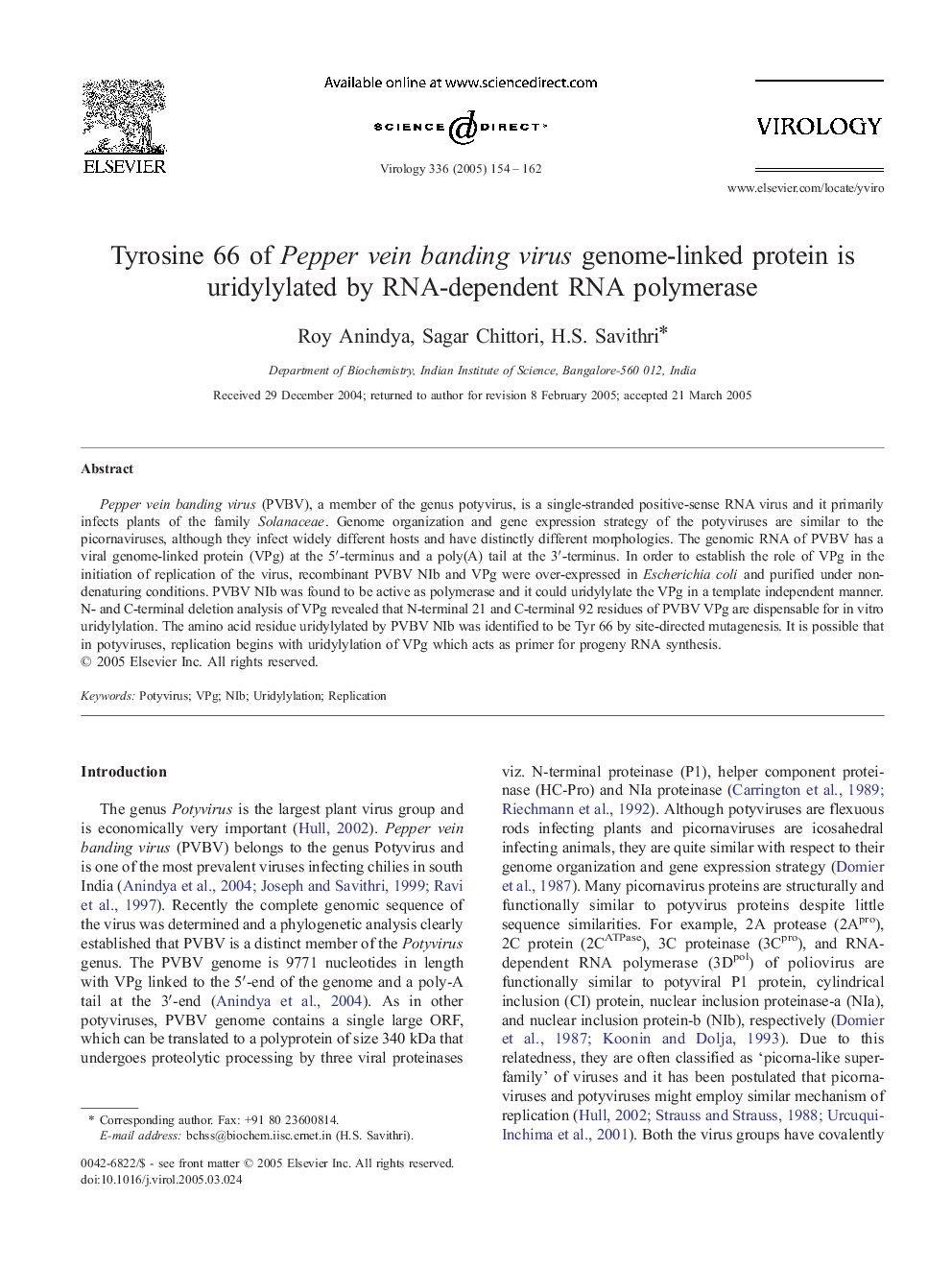| Article ID | Journal | Published Year | Pages | File Type |
|---|---|---|---|---|
| 9286794 | Virology | 2005 | 9 Pages |
Abstract
Pepper vein banding virus (PVBV), a member of the genus potyvirus, is a single-stranded positive-sense RNA virus and it primarily infects plants of the family Solanaceae. Genome organization and gene expression strategy of the potyviruses are similar to the picornaviruses, although they infect widely different hosts and have distinctly different morphologies. The genomic RNA of PVBV has a viral genome-linked protein (VPg) at the 5â²-terminus and a poly(A) tail at the 3â²-terminus. In order to establish the role of VPg in the initiation of replication of the virus, recombinant PVBV NIb and VPg were over-expressed in Escherichia coli and purified under non-denaturing conditions. PVBV NIb was found to be active as polymerase and it could uridylylate the VPg in a template independent manner. N- and C-terminal deletion analysis of VPg revealed that N-terminal 21 and C-terminal 92 residues of PVBV VPg are dispensable for in vitro uridylylation. The amino acid residue uridylylated by PVBV NIb was identified to be Tyr 66 by site-directed mutagenesis. It is possible that in potyviruses, replication begins with uridylylation of VPg which acts as primer for progeny RNA synthesis.
Related Topics
Life Sciences
Immunology and Microbiology
Virology
Authors
Roy Anindya, Sagar Chittori, H.S. Savithri,
